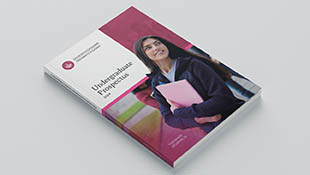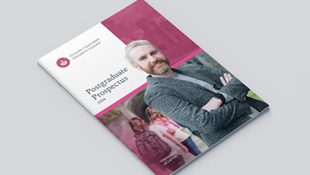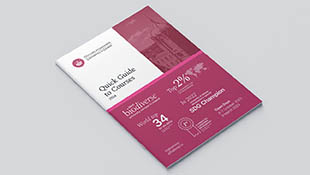-
Courses

Courses
Choosing a course is one of the most important decisions you'll ever make! View our courses and see what our students and lecturers have to say about the courses you are interested in at the links below.
-
University Life

University Life
Each year more than 4,000 choose University of Galway as their University of choice. Find out what life at University of Galway is all about here.
-
About University of Galway

About University of Galway
Since 1845, University of Galway has been sharing the highest quality teaching and research with Ireland and the world. Find out what makes our University so special – from our distinguished history to the latest news and campus developments.
-
Colleges & Schools

Colleges & Schools
University of Galway has earned international recognition as a research-led university with a commitment to top quality teaching across a range of key areas of expertise.
-
Research & Innovation

Research & Innovation
University of Galway’s vibrant research community take on some of the most pressing challenges of our times.
-
Business & Industry

Guiding Breakthrough Research at University of Galway
We explore and facilitate commercial opportunities for the research community at University of Galway, as well as facilitating industry partnership.
-
Alumni & Friends

Alumni & Friends
There are 128,000 University of Galway alumni worldwide. Stay connected to your alumni community! Join our social networks and update your details online.
-
Community Engagement

Community Engagement
At University of Galway, we believe that the best learning takes place when you apply what you learn in a real world context. That's why many of our courses include work placements or community projects.
Settlement, Society, Frontier and Landscape in Later Medieval Connacht
An inter-disciplinary approach to researching Gaelic and Anglo-Norman Connacht
This part of the project takes an inter-disciplinary approach to understanding settlement, society and the economy in Connacht, particularly in north or Lower Connacht, between the 12th century and the early 17th century, with occasional research forays into later periods. Topics like the recognition of ethnicity in the archaeological record, the types of settlement forms used by the Gaelic and Anglo-Norman elites, the deliberate use of archaisms to promote political power and the various functions of castles are all addressed in the research for this part of the Connacht project.
Work is currently focussed on producing and finishing an edited book, comprising a number of essays, on Moygara Castle in south County Sligo, which was associated during later medieval times with the O’Gara clan. It is hope to have this book ready for the publishers by early summer 2018. The first references which link the O’Gara family to Moygara Castle occur in 1538, when Niall Garb O’Donnell was killed there by a gun shot, and so it is clear that this was a high-status Gaelic site by the sixteenth century at least. The castle was burned by Scots mercenaries in 1581, but appears to have been rebuilt afterwards.
The castle is composed of a large square bawn (courtyard) with four corner towers and a two-storey gatehouse. Three of the corner towers stand to two stories in height, while the fourth, at the south-western corner of the bawn, stands to three stories. A rectangular structure on the northern side of the bawn appears to be the earliest building on the site and a recent excavation directed by Chris Read of Sligo IT has shown it have been a fifteenth- or sixteenth-century tower house. The bawn, with its corner towers and gatehouse, were clearly added to the earlier structure in the first half of the 1600s.
The bawn measures c.50m square and is defined by a well-preserved stone wall which is pierced by at least 37 gun loops, which are original features of the structure. The four flanking towers of the castle, which also feature numerous gun loops, are not square in plan, as the outermost angle is slightly acute which gives each tower a subtle spearhead shape in plan. In architectural terms, the bawn is very similar to a number of other bawns built further north between 1610 and 1620 during the Plantation of Ulster.
This Settlement, Society, Frontier and Landscape in Later Medieval Connacht.
section of the Connacht Project also has collaborative links with Professor Tom Finan of St Louis University’s interdisciplinary project which focusses on the Lough Key area during later medieval times and Dr Niall Brady’s current project, which is entitled Castles in Communities Archaeological Settlement Study, focussed on the Medieval Narrative of Ballintober, Co. Roscommon. (https://sites.google.com/view/irelandcastlesincommunities/home)
Publications linked to Settlement, Society, Frontier and Landscape in Later Medieval Connacht.
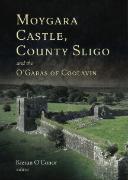 |
O’Conor, K. 2023 |
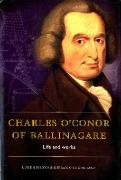 |
Luke Gibbons and Kieran O’Conor (eds.) 2015 |
Kieran O’Conor. 2023, Moygara Castle, County Sligo, and the O’Gara’s of Coolavin, Wordwell: Dublin.
Kieran O’Conor and Jeremy Williams. 2015, Ballinagare Castle, In L. Gibbons and K. O’Conor (eds) Charles O’Conor of Ballinagare, 1710-91: Life and Works. Dublin, 52-71.
Luke Gibbons and Kieran O’Conor (eds.). 2015, Charles O’Conor of Ballinagare, 1710-91: Life and Works, Four Courts Press: Dublin.
J.J. McDermott and Kieran O’Conor 2015, Rosclogher Castle: a Gaelic lordship centre. Breifne 13, 470-97.
Kieran O’Conor, Paul Naessens and Rory Sherlock. 2015, Rindoon Castle, Co. Roscommon: an Anglo- Norman fortress on the western shores of Lough Ree, in B. Cunningham and H. Murtagh (eds), Lough Ree – Historic Lakeland Settlement. Four Courts Press: Dublin, 83-109.
Kieran O’Conor and Paul Naessens. 2015, Temple House (Co. Sligo): from Templar castle to New English mansion, in M. Browne and C. Ó Clabaigh (eds.), Soldiers of Christ: The Knights Templar and the Knights Hospitaller in medieval Ireland, Four Courts Press: Dublin, 124-50.
Kieran O’Conor, Paul Naessens and Rory Sherlock. 2014, Rindoon Castle, Co. Roscommon: a border castle on the Irish frontier, Château Gaillard 26, 313-23.
Kieran O’Conor and Paul Naessens. 2012, Pre-Norman fortification in eleventh- and twelfth-century Ireland, Château Gaillard 25, 259-268..
Kieran O’Conor, Niall Brady, Anne Connon and Carlos Fidalgo-Romo. 2010, The Rock of Lough Cé, Co. Roscommon, in T. Finan (ed.) Medieval Lough Cé - history, archaeology and landscape, Four Courts Press: Dublin.








